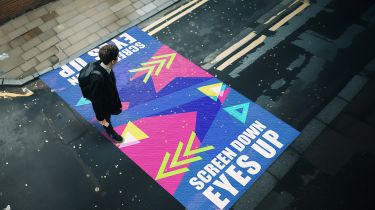Drivers warned to watch out as school kids on phones becomes major road safety issue
1,200 children are injured in collisions near schools every month and 84 per cent admit to using phones while walking to and from school

The vast majority of secondary school pupils admit to using their mobile phones while walking near school, and one in five say they’ve been hit or narrowly missed by vehicles when distracted by their screens.
The alarming stats come from a survey of 2,000 pupils and their parents earlier this year, carried out on behalf of Churchill Motor Insurance. As well as the new survey data, the firm commissioned behavioural scientists to film outside 10 schools across the UK, with footage revealing that on average 10 per cent of children have their eyes glued firmly to mobile phone screens when crossing the road outside the school gates. At one secondary school in Edinburgh, 50 per cent of pupils were filmed staring at their phones while crossing the road on their way to school.
With figures from the Royal Society for the Prevention of Accidents (ROSPA) showing that 1,200 schoolchildren are injured every month in traffic accidents within 500m of a school, Churchill has launched a ‘Screen Down, Eyes Up’ campaign to bring home the dangers of distracted children staring at phone screens instead of focusing on the Green Cross Code.
According to the insurer, over half of children are given their first phone during the summer break before they start secondary school. It also notes that September will see many children making part or all of their journey to school unsupervised for the first time, while also juggling with the new distraction of their mobile phones.
“In today's digital age, diverting attention away from the screen is a challenge, but one needed to ensure safety when walking,” says Churchill spokesperson Ewan Robertson. “That's why we’ve launched our "Screen down, Eyes Up" campaign to help spark discussions among students and schools, to promote greater road safety awareness.”
As part of the Screen Down, Eyes Up campaign, Churchill worked with psychologist Dr Jessamy Hibberd to suggest ways in which local authorities could reimagine roads and signage to grab the attention of young people.
“Younger secondary school children do not combine different sensory information, such as vision and sound, to make sense of the world as adults do,” says Hibberd. “Secondary school children are also more impulsive and do not process risk in the same way as adults, which means that signage directed at them around schools needs to be more noticeable and ‘direct’ to grab attention away from their phones.”
She has also come up with a range of recommendations for local authorities who might wish to consider modifying road architecture to help distract students away from their phones. They include the use of new attention alerts such as ‘eyes emojis’, and clever use of arrows, as well as brightly coloured signage, auditory alerts and signs on the way towards crossings and on the ground when children reach them.
Click here to learn more about the Highway Code...




